How to identify common bug bites, and treat them properly
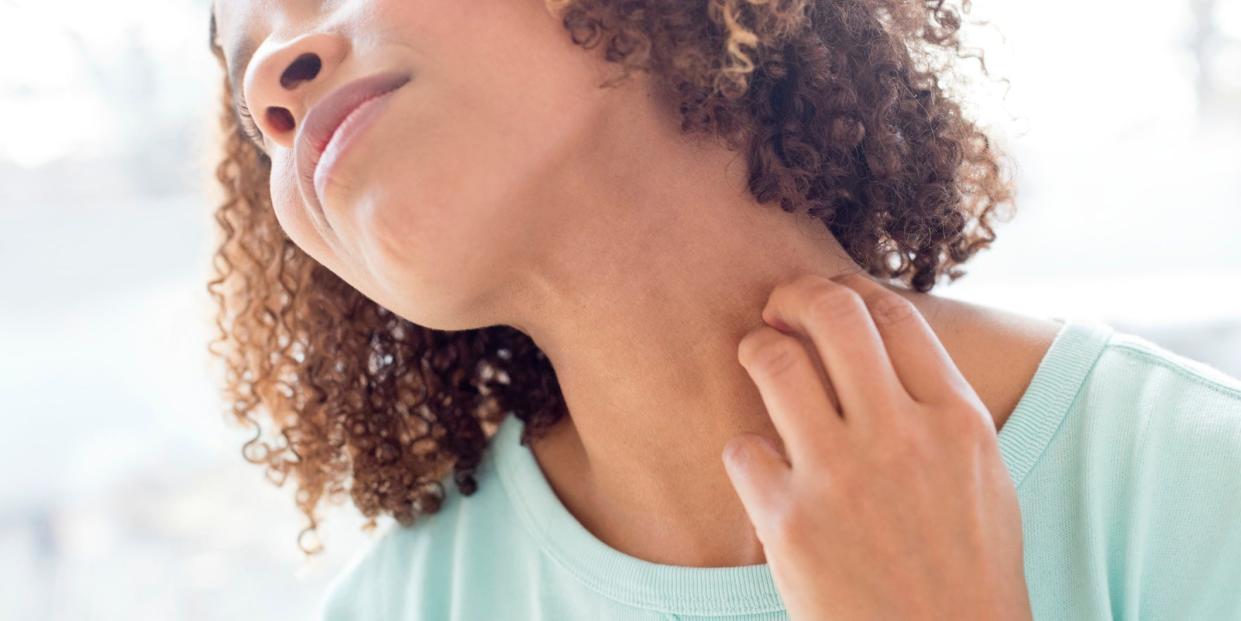
Science Photo Library/Getty Images
Nobody likes bug bites. They are often itchy, irritating, and painful. But despite the annoyance, most insect bites, as well as stings, are relatively harmless and easy to treat.
Most of the time, anti-itch creams and pain relievers can help you refrain from scratching and allow the bite or sting to heal on its own. In some cases, however, indoor infestations may also require you to clean or exterminate your home to prevent further insect run-ins.
Here's what you should know about the most common types of bug bites, how you can tell them apart, and the best way to treat them and stop the itch.
Table of Contents
Warning: This article contains images of bug bites as well as fleas, bed bugs, spiders, ticks, and other insects on humans.
Bed bug bites
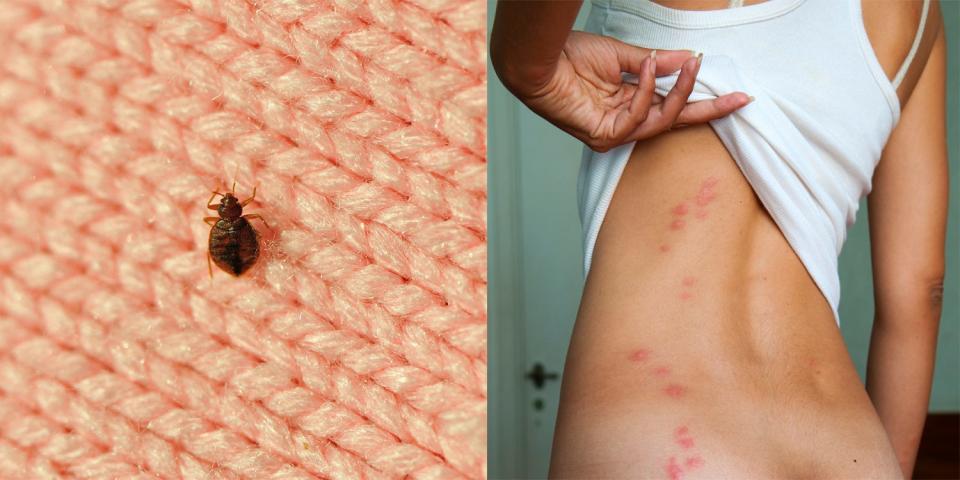
dblight/Getty Images and Joel Carillet/Getty Images
Bed bugs are small insects that commonly live in the creases or seams of mattresses or upholstery. Bed bug bites can look like small red marks on light skin, or dark spots on darker skin, and often appear as clusters of 3 to 5 bites in a zig-zag or line pattern.
Bed bug bites often occur at night as you're sleeping, and they tend to present on your upper body, such as the abdomen or arms. It's rare to actually spot a bed bug — they're about the size of an apple seed — but their bites will be very itchy. You may also notice red or rusty colored stains on your sheets, which will be the markings of squashed bed bugs.
To treat bed bug bites, you'll want to apply an anti-itch cream like cortisone, or try taking oral antihistamines. It's also important to call an exterminator and take measures to get rid of bed bugs, as they will keep biting you if the infestation isn't addressed.
Get more detailed info on how to identify and treat bed bug bites.
Flea bites
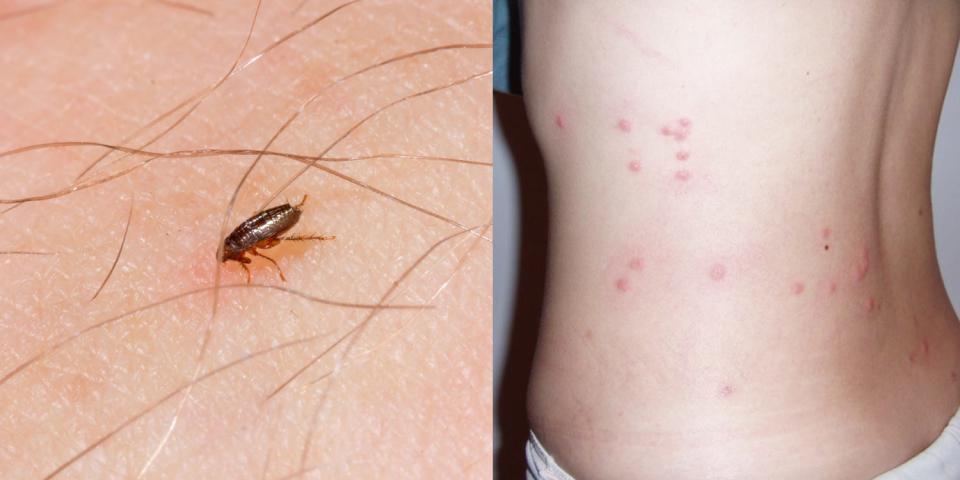
gutaper/Getty Images and Nzfooty/Wikimedia
Fleas are flightless insects that commonly bite dogs or cats. If you have a pet, you may be more likely to deal with these pests, but fleas can still bite humans even if you don't have an animal in your home.
Flea bites appear as red itchy bumps, and like bed bug bites, they will often be grouped together in clusters of three or four, and may form a line pattern. They are most commonly found on your lower body, such as the ankles or feet, as fleas tend to live on the ground in tall grass or wood piles.
To treat flea bites, you'll want to refrain from scratching, and apply anti-itch creams or take oral antihistamines. If you have a pet, you'll also want to see a veterinarian about flea treatments, and thoroughly clean and vacuum your home to get rid of fleas.
Mosquito bites
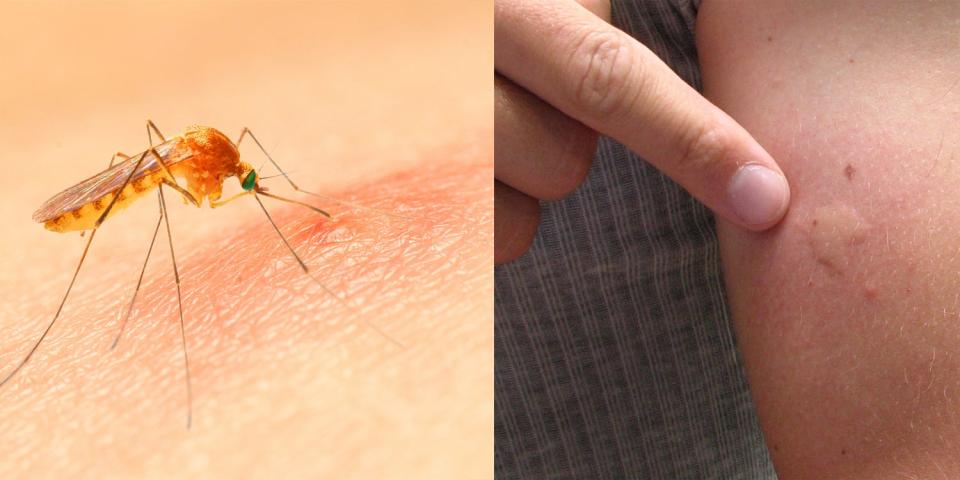
simonkr/Getty Images and abadonian/Getty Images
Mosquitos are one of the most annoying parts of summer. Mosquito bites appear as red or pink raised bumps, and will often occur at dusk or night time when temperatures are hot and humid.
To get rid of mosquito bites and help them heal quickly, it's important not to scratch the bites. Scratching will only exacerbate the itch, and can also increase your risk of infection.
The best way to treat mosquito bites is by applying hydrocortisone cream or calamine lotion, to soothe the skin and reduce the itch. Home remedies for mosquito bites can also include a cold compress, aloe vera lotion, or an oatmeal bath.
Learn more how to prevent and treat mosquito bites fast.
Spider bites
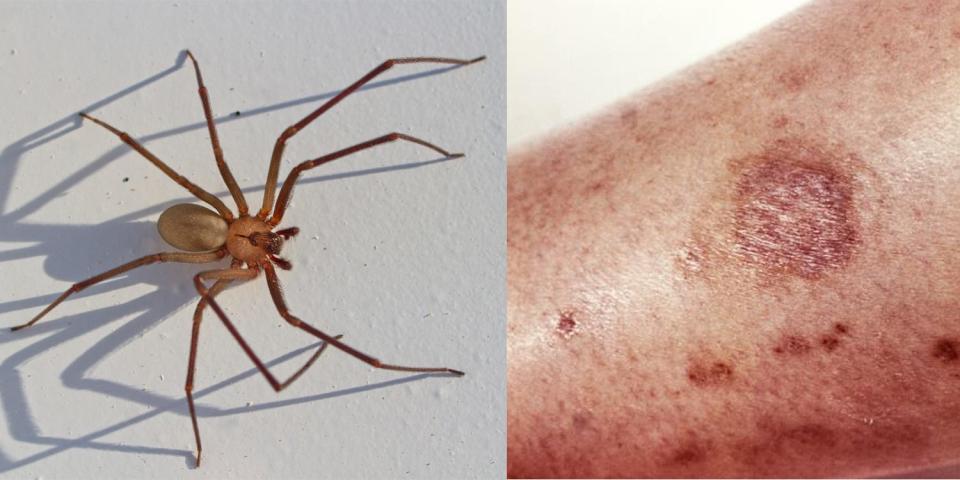
Pete Muller/Getty Images and CDC
Though perhaps the most fear-inducing of all insect bites, spider bites are very rare. In fact, only about 500 of the 40,000 types of spiders around the world actually bite humans, and just 12 of those deliver enough venom per bite to be considered dangerous to humans.
In the US, only two types of spiders inject enough venom capable of causing serious harm to humans — the brown recluse spider and the black widow spider.
Brown recluse spider bites are characterized by pain, redness, and swelling. They can cause local necrosis, or when the skin tissues are destroyed. Black widow spider bites produce a sharp pricking sensation, which develops into a dull ache or numbness. Two red fang marks may also be visible.
If you're concerned about your spider bite, you should call a poison control helpline and try to get to an emergency room as soon as possible. However, most spider bites do not require medical treatment, and you can reduce any itch or pain with the same over-the-counter methods for other bug bites.
Head lice
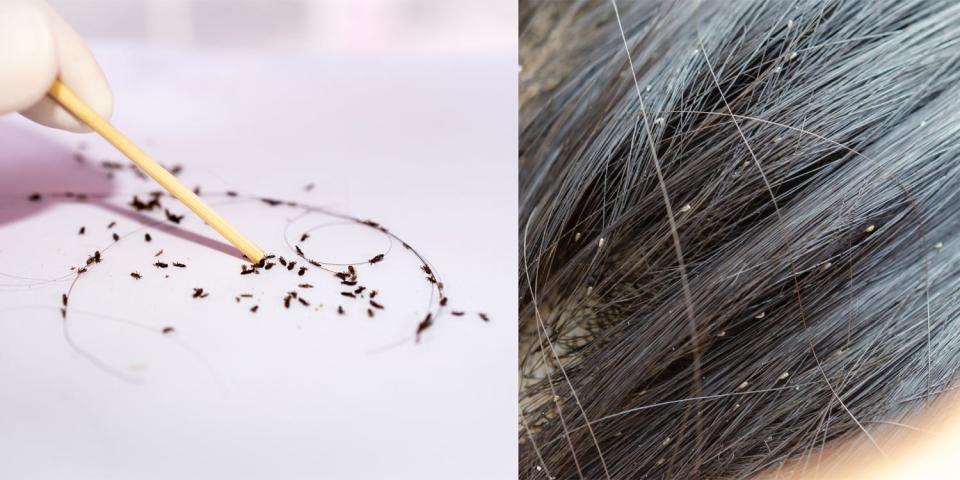
Panyawat Boontanom/EyeEm/Getty Images and hirun/Getty Images
Lice are tiny parasites that often live on human scalps. It's most common for children to get lice, and they mainly spread through head-to-head contact, such as:
Sharing hats, hair accessories, or other clothing
Participating in sports or playing on a playground
Having sleepovers or lying on a couch, bed, pillow, or carpet
Lice can appear as tiny white or yellow specks in hair — they may look like dandruff — and they are extremely itchy. To treat head lice, you can use a special comb that physically removes lice. You can also try over-the-counter or prescription topical and oral medications.
If you're interested in purchasing treatments, Insider Reviews has put together a list of the best products to get rid of lice, including combs, sprays, and shampoos.
Tick bites
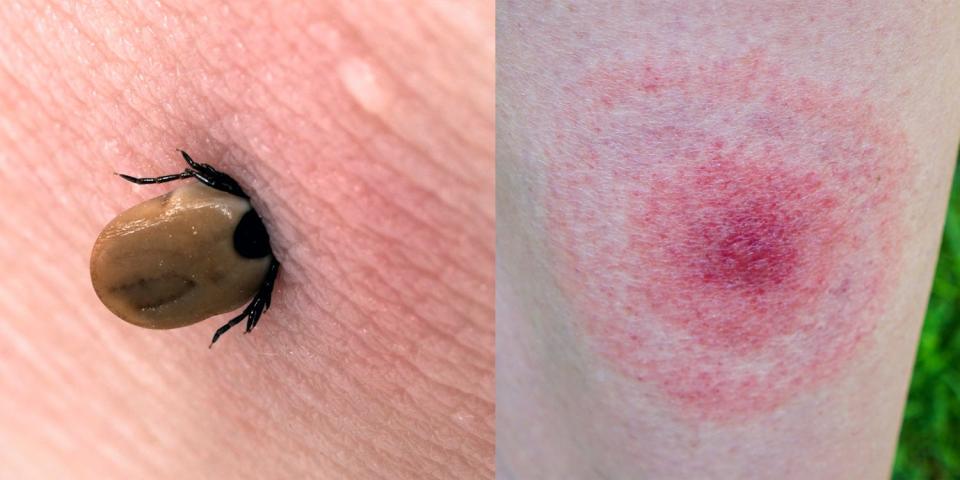
Himagine/Getty Images and anakopa/Getty Images
Ticks are small, blood-sucking parasites that attach to your skin when they bite. You may pick up a tick by spending time in tall grass or wooded areas, such as when you're hiking.
Tick bites aren't usually harmless, but in some cases, ticks can spread potentially harmful illnesses like Lyme disease. However, ticks need to have bitten you and fed for at least 24 hours to transmit disease.
That's why it's important to learn how to remove a tick if you find one buried in your skin. If you don't, Lyme disease symptoms (or other signs of tick-borne illness) could appear within three to 30 days. The most noticeable sign is often a red, circular rash that resembles a bullseye.
Chigger bites
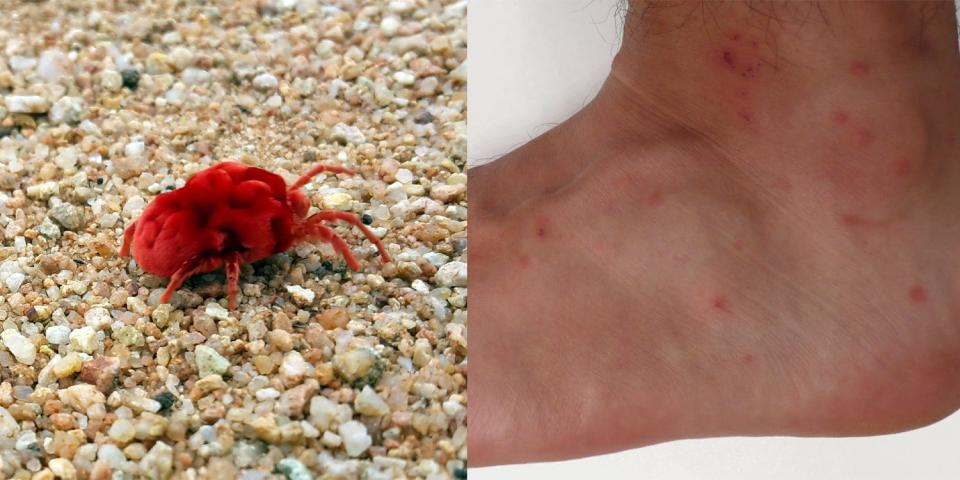
dna_beeb/Getty Images and TimVickers/Public domain
Chiggers are a type of mite that are nearly impossible to see without a magnifying glass. Only baby chiggers bite humans, and they can grasp on to you when you're outdoors around tall grass in hot and humid environments.
Chigger bites look like small red, raised marks that may resemble a pimple. They are extremely itchy, and the bites can sometimes appear in groups that grow bigger and itchier over several days.
To treat chigger bites, you'll use the same treatment methods as with other common bites. Try not to scratch, use an anti-itch cream, or take oral antihistamines — and they should resolve on their own within a few days.
Bee sting
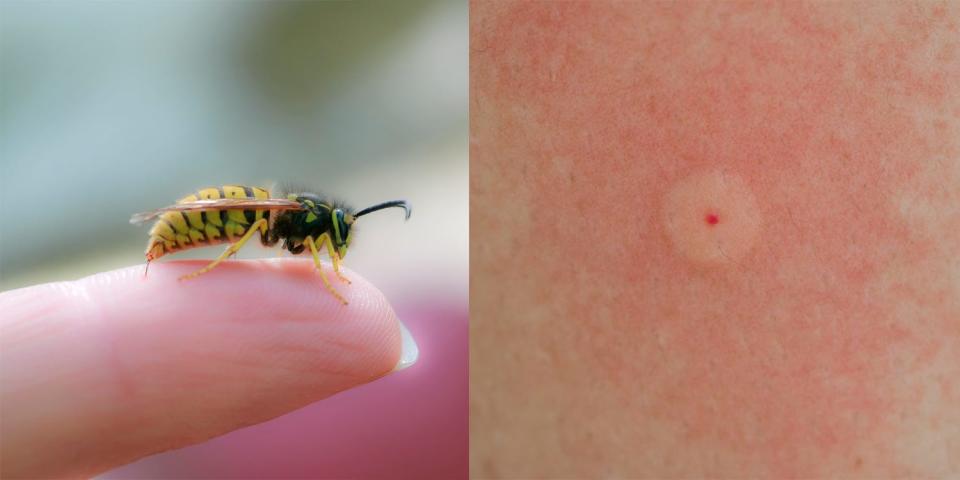
Nataba/Getty Images and Krugrace-kanoksak/Getty Images
Bees do not bite — but they sting. A bee or wasp sting can leave a red, painful, itchy bump that may swell and grow larger within a few hours.
Most bees are not aggressive, and only sting when they feel threatened. Honey bees die after they sting you, leaving their stinger in your skin.
To treat a bee sting, you should remove the stinger if it's still there, and apply ice or a cold compress to reduce swelling and inflammation. Taking Advil or Tylenol may also help relieve pain.
Wasps on the other hand are aggressive and can sting you multiple times at once since their stingers stay intact after a sting.
The treatment process for a wasp sting is similar to a bee sting. If you have multiple wasp stings on your leg, for example, you may want to elevate it on a pillow to further reduce swelling.
Allergic reactions
However, if you have an allergic reaction to a bee or wasp sting, you should seek medical attention immediately. The symptoms of an allergic reaction to an insect sting or bite can include:
Hives or swelling beyond the bite or sting site
Trouble breathing
Tickling or tightness in the throat or chest
Lightheadedness or dizziness
Vomiting or fainting
How to prevent bug bites
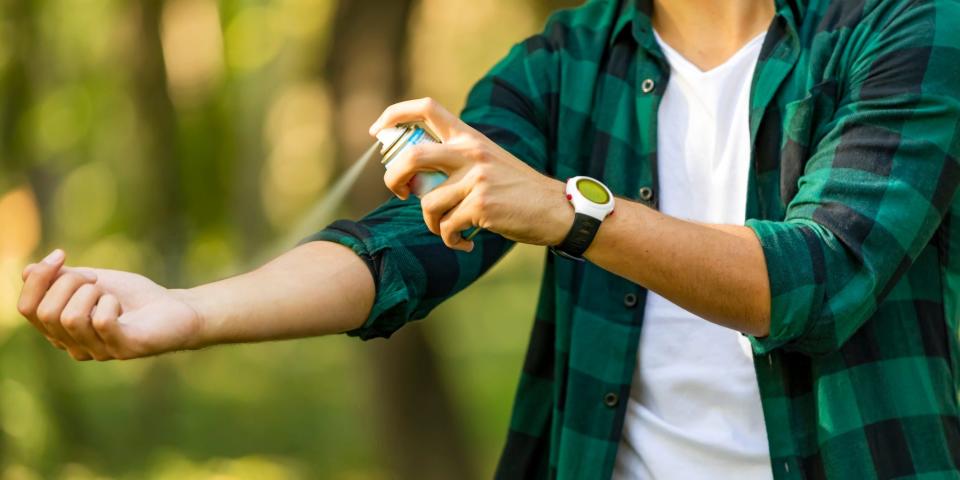
RealPeopleGroup/Getty Images
If you're looking to prevent bug bites, Insider Reviews has put together a buying guide for the best bug sprays. You'll want a bug spray that contains DEET, which is a safe and effective insect repellent. Make sure you aren't using an expired bug spray, as it will likely be less effective.
In addition, since most bug bites occur outdoors, you may want to wear long clothing that covers exposed body parts where bugs tend to bite, like your ankles or arms. This can be especially important if you're going hiking in wooded areas or walking through tall grass.
To prevent indoor infestations, like bed bugs or fleas, you should frequently clean your living space by vacuuming surfaces, washing your bedding, and keeping your bedroom tidy.
This article was medically reviewed by Mona Gohara, MD, a dermatologist at the Yale School of Medicine.
Read the original article on Insider

